Variable Rate Application and VRA maps for Precision Agriculture
Variable rate application in agricultural fields is essential for:
- Identification of yield trends in different field areas
- Implementation of variable rate technology based on productivity of each field zone
- Detection of problem areas that require special attention
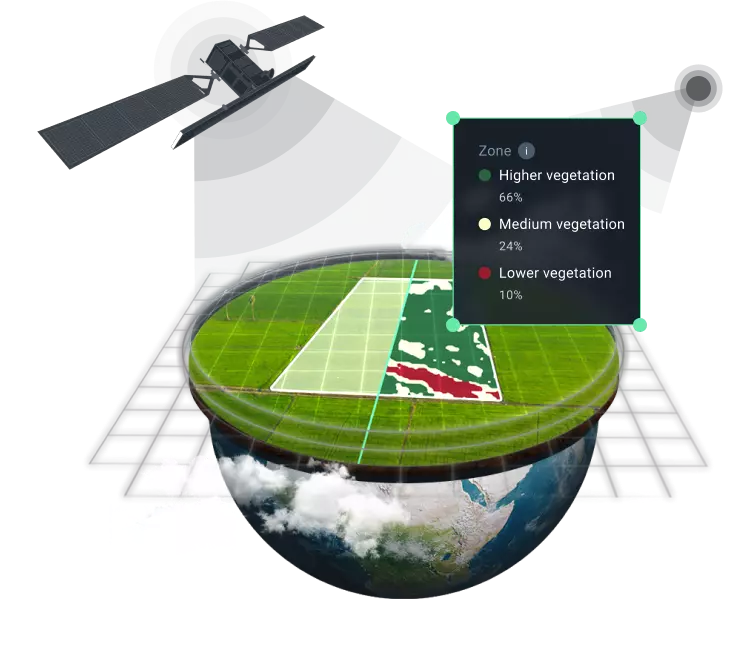
Benefits
VRA technology feature includes:
Yield maximization
Unlock the potential of each crop zone to get the highest possible yields.
Cost reduction
Save money on seeds, fertilizers, means of crop protection, and/or water by implementing variable rate application.
Fertilizer runoff prevention
Prevent soil and water pollution by applying fertilizer according to the needs of each field area.
Savings calculator
Calculate how much money you can save thanks to the implementation of variable rate technology compared to the standard fertilization method.
VRA map download
Download the variable rate prescription map and upload it to your agricultural machinery, save it for later, or share it via a link online.
Optimized soil sampling
Use crop productivity-based maps to save resources on soil analysis by taking soil samples only in problem areas.
Features

Automatic creation of farm management zones based on historical satellite imagery and topography data

Input amount and cost calculation
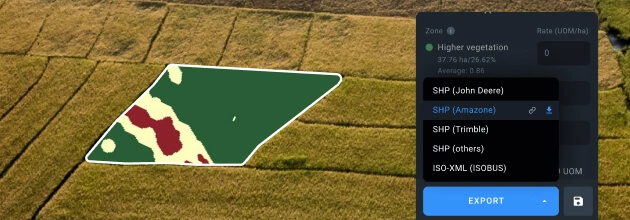
Creation of variable rate application maps compatible with most agricultural machinery

Variable rate technology for precision farming based solely on our inside data
Nitrogen fertilization maps

While creating a variable rate application map, you can select from an array of indices:
- NDVI shows biomass accumulation zones and parts of the field with low vegetation which may require higher fertilizer amounts.
- NDRE enables detection of stressed or dying vegetation in the middle and towards the end of a season for adequate fertilization planning.
- MSAVI is sensitive to bare soil, which makes it most suitable for variable rate fertilizer application during early growth stages.
- ReCl Thanks to measuring leaves’ chlorophyll content, ReCl allows for identifying field areas with yellowed and faded vegetation which may require additional fertilizer application.
- NDMI is perfect for variable rate irrigation as it highlights areas experiencing water stress.
Field productivity-based maps

- Apply potassium and phosphorus fertilizers relying on historical productivity zones data to avoid overapplication in areas where these substances may have accumulated over time.
- Perform variable rate planting by applying different amounts of seeds in different crop productivity zones, depending on whether your goal is to maximize yield or even it out across the field.
- Identify the key areas for soil sampling as indicated by agricultural productivity of different field zones instead of relying on generic grid sampling.
- Evaluate field productivity prior to buying or renting land to minimize risk and increase profit.
Map builder
Terrain that includes hills, slopes, or pits is more likely to experience humus leaching and changes in soil chemical composition, which can lead to yield loss.
Topography determines the amount of fertilizer, seed and/or crop protection products needed for variable rate application in different field zones for enhanced crop growth.
Map builder allows you to combine vegetation and elevation layers to create an optimal variable rate fertilizer application map and increase productivity.
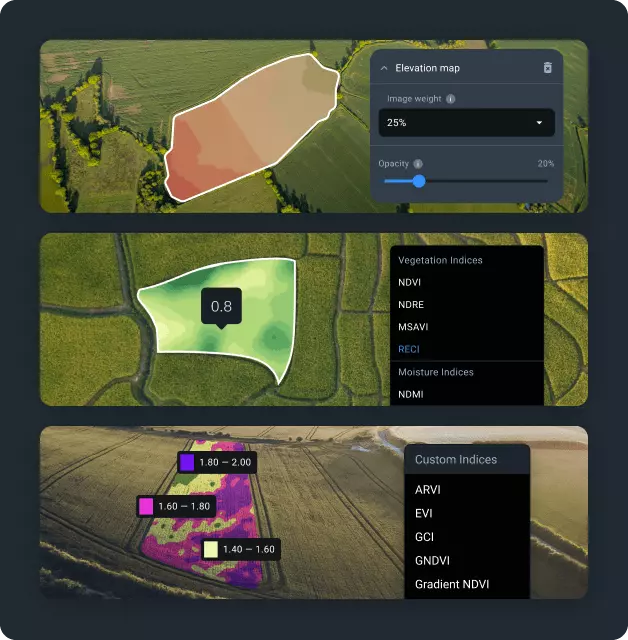
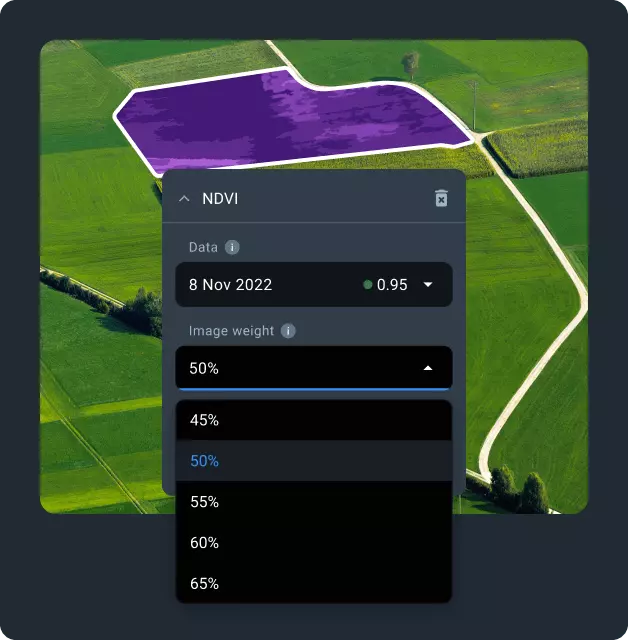
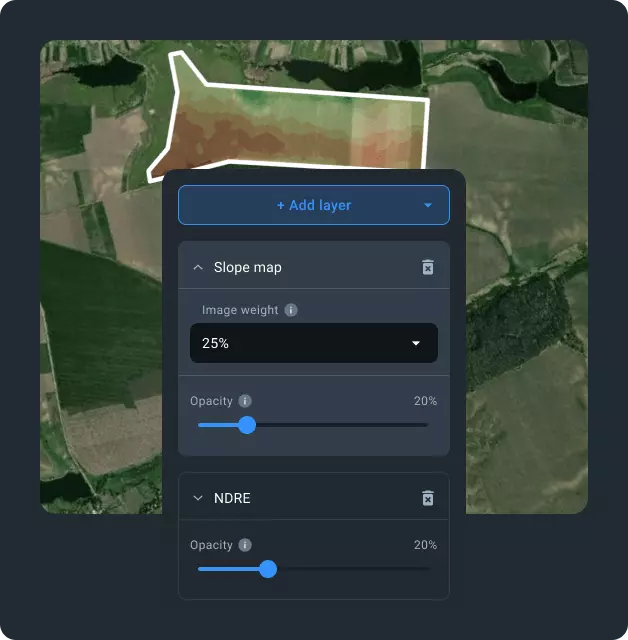
When creating a map, you can:
Select the number of zones, detail level, and up to 5 available layers where each layer corresponds to one type of data:
- Default vegetation index (NDVI, NDRE, NDMI, MSAVI, RECI)
- Custom index
- Elevation map
Select how much weight (percentage) each layer will have in the final VRA map
Change opacity to compare layers and draw insights about field zones based on a combination of different data.
Custom solutions
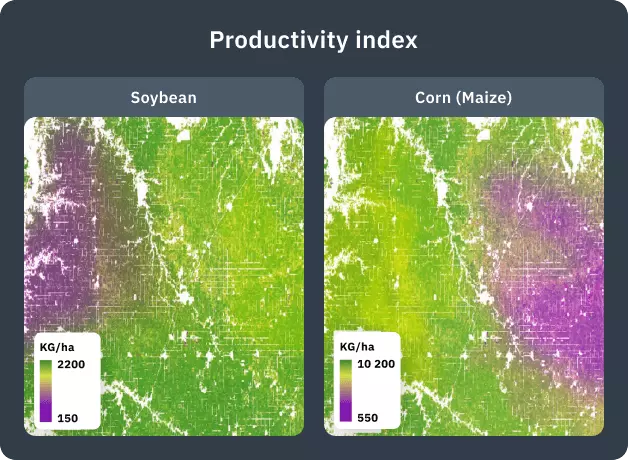
We utilize our exclusive patented variable rate technology algorithm to develop custom projects addressing specific issues with the utmost precision and accuracy.
Use case: one of our clients wanted to evaluate the productivity of their soybean and corn fields in the Corn Belt, USA. Relative data (-1 to +1) was not enough — the client needed information on the productivity of specific corn and soybean fields in absolute values (kg/ha).
To satisfy this request, our R'nD team had to combine their patented crop productivity mapping algorithm with 7 years of biophysical modeling data. By calculating the biological yields of specific crops they managed to create a new custom index called CALPI (Combined Arable Land Productivity Index). With this index, our client was able to obtain detailed data on the productivity of specific crops in their fields and significantly increase yields with differential seeding and variable rate fertilizer application.